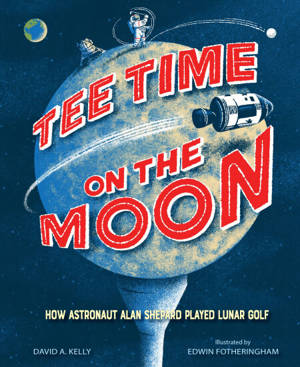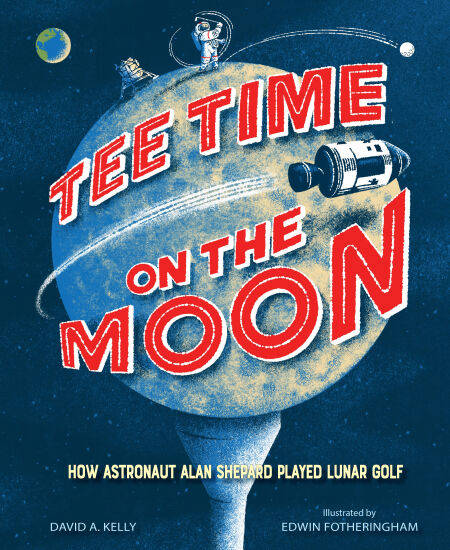
- Afhalen na 1 uur in een winkel met voorraad
- Gratis thuislevering in België vanaf € 30
- Ruim aanbod met 7 miljoen producten
- Afhalen na 1 uur in een winkel met voorraad
- Gratis thuislevering in België vanaf € 30
- Ruim aanbod met 7 miljoen producten
Zoeken
Tee Time on the Moon E-BOOK
How Astronaut Alan Shepard Played Lunar Golf
David A. Kelly
E-book | Engels
€ 11,82
+ 11 punten
Uitvoering
Omschrijving
Astronaut Alan Shepard's mission: Fly to the moon. Study it in more detail than ever before. Hit a golf ball in low gravity. But how far? Find out in this engaging STEM/STEAM picture book.
In 1971, Alan Shepard and his fellow astronauts made their way to the Moon in the cramped Apollo 14 capsule. Their mission: Study the moon in more detail than ever before. While the world watched on TV, Shepard and Edgar Mitchell gathered rock and soil samples wearing stiff, heavy spacesuits. But Alan Shepard had a secret hidden in his sock: two tiny golf balls. Golf was Shepard’s favorite sport. And since the moon has virtually no atmosphere and gravity that is only a fraction of the Earth’s, a golf ball should have been able to go far. But did it?
Here's the little-known but true story of an experiment that may have started as a stunt, but ended up making people think differently about the moon, ask questions, and look for answers.
In 1971, Alan Shepard and his fellow astronauts made their way to the Moon in the cramped Apollo 14 capsule. Their mission: Study the moon in more detail than ever before. While the world watched on TV, Shepard and Edgar Mitchell gathered rock and soil samples wearing stiff, heavy spacesuits. But Alan Shepard had a secret hidden in his sock: two tiny golf balls. Golf was Shepard’s favorite sport. And since the moon has virtually no atmosphere and gravity that is only a fraction of the Earth’s, a golf ball should have been able to go far. But did it?
Here's the little-known but true story of an experiment that may have started as a stunt, but ended up making people think differently about the moon, ask questions, and look for answers.
Specificaties
Betrokkenen
- Auteur(s):
- Illustrator(s):
- Uitgeverij:
Inhoud
- Aantal bladzijden:
- 40
- Taal:
- Engels
Eigenschappen
- Productcode (EAN):
- 9781662680182
- Verschijningsdatum:
- 24/07/2023
- Uitvoering:
- E-book
- Beveiligd met:
- Adobe DRM
- Formaat:
- ePub 3 Fixed Layout

Alleen bij Standaard Boekhandel
+ 11 punten op je klantenkaart van Standaard Boekhandel
Beoordelingen
We publiceren alleen reviews die voldoen aan de voorwaarden voor reviews. Bekijk onze voorwaarden voor reviews.








